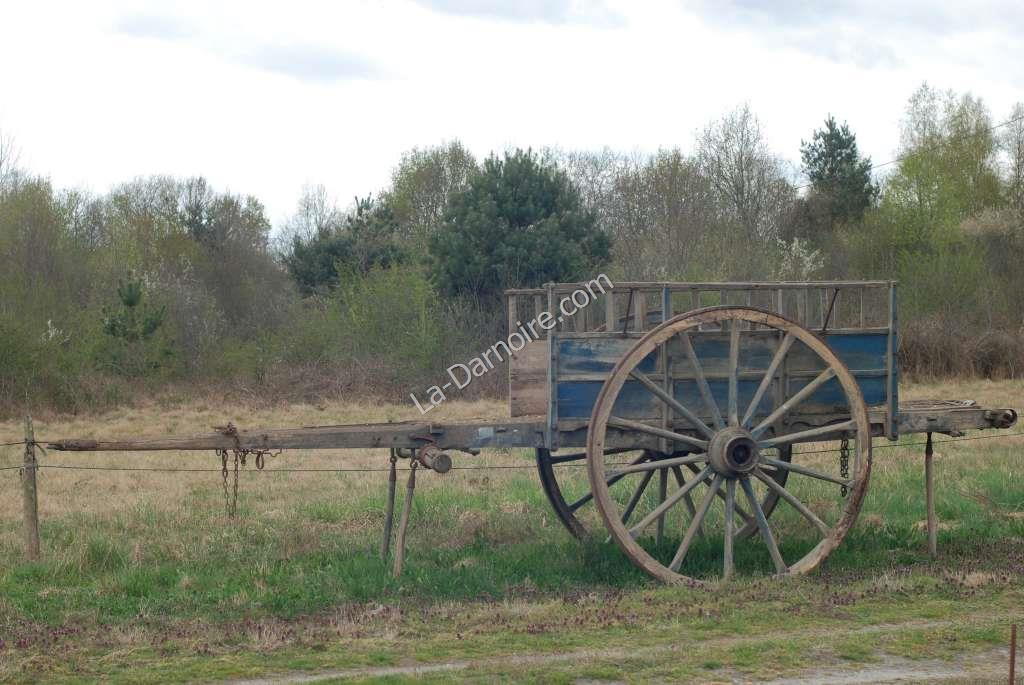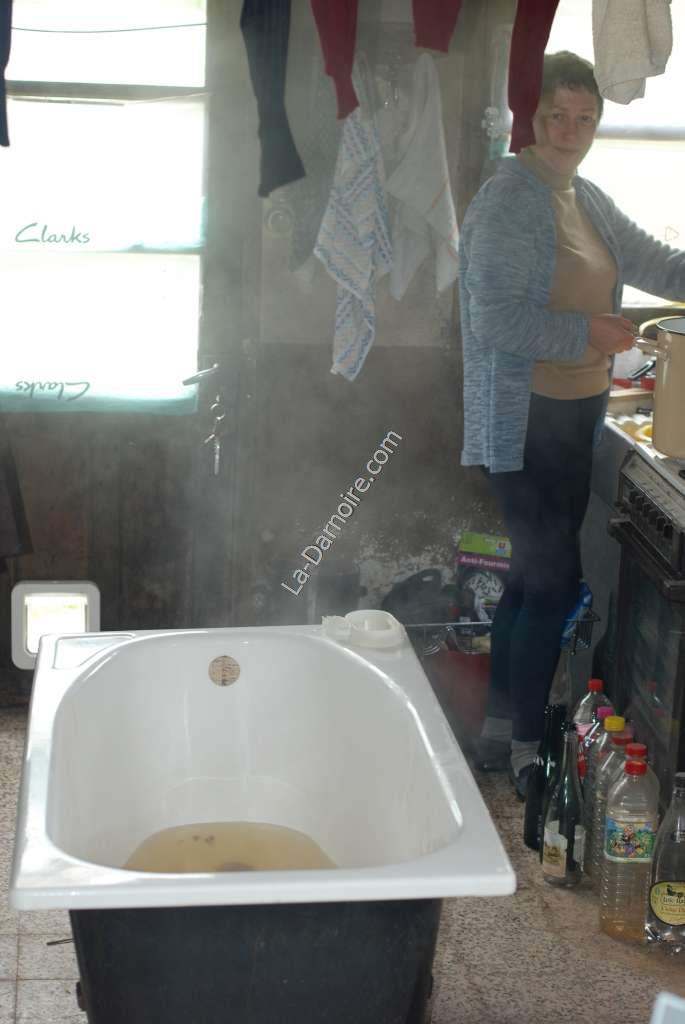Rain, rain, rain.
It’s rained every day this week! The ditches are overflowing. Still, at least the pond is filling up. In between showers we feed the carp with stale bread. There are some nice sized fish in the pond – some over 40 cm long.
LSS tackled the water tank (“ballon”) and managed to get water to appear at the kitchen tap. It’s pale brown in colour (the water, not the tap) probably due to rust in the pipes. But it’s wet, and we’ll at least be able to wash the walls and floors with it.
I should perhaps explain about this ballon thing. There is a well at the property, which has been the sole source of household water since the house was built in eighteen hundred and something. By the simple method of tying a large washer to a piece of rope, and lowering it into the well, I have determined that it is just over 4 metres deep, and the water depth is 3 metres. A pipe runs through a hole in the brickwork about half-way down the well and disappears into the water. The other end of this pipe runs underground to one of the outbuildings, where it terminates at an ancient electric pump. From this pump, a short length of leaky bandaged pipe runs above a collection of jam-jars (to collect the drips) into a galvanised steel drum (known as a “ballon” here) which is supposedly able to withstand a pressure of 10 bar. The idea is that when the pump is switched on, water fills up this ballon, and once the pressure inside reaches around 3 bar, the pump switches off.
However, up until today we have not been able to get any water to enter the ballon at all. Examining the setup, LSS discovered a small bolt on the pump inlet, and after some head-scratching we worked out that this must be the inlet used for priming the pump. Pouring two litres of water into the hole with the aid of a funnel meant the pump was finally operational.
Whilst LSS was busying herself in supplying the household with rusty water, I finished working on the fruit trees in the orchard, pruning off the dead branches. LSS then assisted me with removing the remaining brambles. I have never known plants to have such long, persistent roots!
All this time, the wood stove was burning quietly away in the kitchen, and as LSS had had the brilliant idea of sticking some foil-wrapped potatoes into the oven side of it first thing this morning, we now have some roast potatoes for dinner.
One of the first things we had to do when we arrived, was to empty the house and barn of junk. In the barn was an old horse-drawn cart which was covered with bits of wood and fruit boxes.
Anybody want this thing? It’s yours for 10 euros. The only catch is that you need to collect it.
Of course the woodworm/termites had been busy; nearly all the wood pieces were infested. Mould was in evidence too. The wood scrap simply had to go. But instead of just throwing it away, we decided to extract whatever remained of the calories of energy it contained by burning it in the kitchen stove.
Of course if we had told anyone (especially the aged FIL) what we were doing, there would have been gasps of horror. “You can’t burn that in the kitchen stove! It won’t burn well! You’ll block the chimney! Go and cut down a nice tree instead!”
Well, chimneys can be cleaned, n’est pas? The way I look at it is that we have wood to burn which would otherwise just be thrown away.
I reflected for a moment on a documentary about Ethiopia we saw on British television a while back. The camera crew followed one young woman who lived in a tent made of animal skins. Her earthly riches consisted of the tent, a cooking pot, and a goat. Her husband was off somewhere patrolling the border with his AK-47. Of course the area around her tent, for as far as the eye could see, was bare. Not a tree or a blade of grass in sight. So when it came to deciding whether to burn our wood in the kitchen stove, I pictured this woman wandering along with her goat and seeing something on the ground. “Ooh, a twig! I can heat my house for a week with that! And cook a goat.” Riches are relative.
Yes, we did have to have the chimney cleaned. But then again, we don’t know when this was last done, so we can’t blame the poor quality wood for that!
The fruit boxes have been stacked in one of the outbuildings which will see later use as a chicken coop. If we can’t use the fruit boxes for anything else I’m sure they’ll come in handy for lighting fires.
Also in the house were two large cupboards which had not been moved, dusted, or otherwise touched for about 30 years. Of course the woodworm and/or termites had had a field day here too. The first cupboard simply fell apart when we tried to move it. This, too, ended up becoming a pile of wood ash at the bottom of the garden. The other cupboard was in slightly better condition, because only the doors fell off. I did consider using this cupboard in the workshop for tool storage but decided my tools would be better off without it. I suspect it will suffer the same fate as the first.


